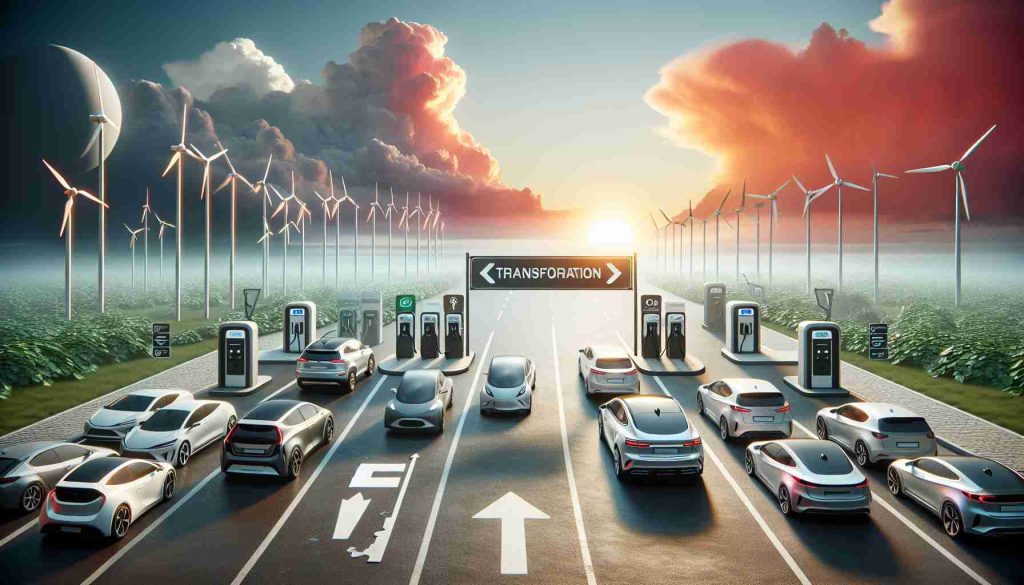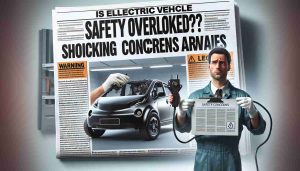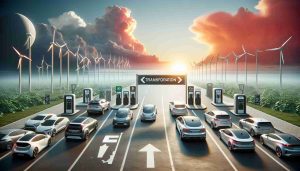Big Changes Ahead for EV Buyers! Incentives Are Gone
5 min read
Shift in Canada’s EV Landscape
In a surprising move, the Canadian federal government has halted its electric vehicle (EV) incentive program, which offered rebates of up to $5,000 for those purchasing or leasing EVs. This decision comes as the government states that the funds allocated for the Incentives for Zero-Emission Vehicles (iZEV) Program are now depleted. Since its inception in 2019, the program has successfully supported the sales of approximately 546,000 electric vehicles across the country.
The program was initially slated for a pause on March 31, 2025, raising questions about the future accessibility of EVs for Canadians as the market reacts to the loss of financial incentives.
In related news, Honda is taking a cautious approach regarding its plans for an electric vehicle battery production facility in Canada. Executive Vice President Noriya Kaihara expressed that current political dynamics, particularly influenced by U.S. policies, necessitate a careful assessment of the production timeline for their EV models. As the automotive giant weighs its options, it has also introduced its ‘Honda 0’ lineup of electric vehicles, expected to debut in North America by 2026.
As of the latest market updates, Honda shares saw a modest increase, reflecting a slight uptick in investor confidence during these transformative times for the automotive sector.
Shifting Dynamics in Canada’s EV Sector
The cessation of Canada’s EV incentive program echoes broader societal and cultural shifts regarding sustainability and energy consumption. With incentives that historically encouraged adoption now stripped away, the transition to electric vehicles may encounter significant resistance. This could exacerbate regional disparities in EV adoption, as provinces with fewer resources or less favorable market conditions may struggle to meet national emissions goals. The concern is palpable; a decline in accessibility could stall consumer momentum toward a greener future.
The implications for the global economy are equally profound. Canada has positioned itself as a pivotal player in the clean technology landscape. The halt in incentives might prompt automakers to recalibrate their investments. Countries that maintain or expand their EV funding—such as Germany and China—may bolster their competitive edge in this burgeoning market. Notably, as companies like Honda reconsider their expansion plans in Canada, this could hinder local job creation and innovation.
Furthermore, the potential environmental impacts of this shift are significant. Reduced EV sales could slow down progress toward Canada’s climate targets, raising questions about how effectively the nation can combat climate change. As manufacturers pivot to other markets, the long-term significance could reshape Canada’s role in the global move towards sustainability, emphasizing the delicate interplay between policy, economy, and environment in the transition to a low-carbon future.
Canada’s Electric Vehicle Evolution: The End of Incentives and What’s Next?
Shift in Canada’s EV Landscape
The recent pause in Canada’s electric vehicle (EV) incentive program has sparked significant interest and concern among consumers and industry stakeholders alike. The federal government’s decision to discontinue the Incentives for Zero-Emission Vehicles (iZEV) Program, which provided rebates of up to $5,000 for the purchase or lease of electric vehicles, raises critical questions about the future of EV accessibility in Canada.
# Background on the iZEV Program
Launched in 2019, the iZEV Program has played a pivotal role in escalating the adoption of electric vehicles, with approximately 546,000 EVs sold under its auspices. Originally set to run until March 31, 2025, the untimely depletion of funds for the program has prompted a review of its impact on the market and the direction of Canada’s green transportation goals.
# Pros and Cons of the EV Incentive Program Halt
Pros:
– Addressing Budget Constraints: Halting the program may allow the government to allocate funds to other pressing environmental initiatives or programs that can enhance sustainability.
– Market Naturalization: The absence of subsidies might encourage market-driven pricing and innovation within the EV sector, potentially leading to long-term price reductions.
Cons:
– Reduced Affordability: The immediate impact will likely be a decrease in EV purchases as financial incentives are key to making these vehicles competitive with traditional combustion engines.
– Market Instability: A sudden halt may create a vacuum that could stall momentum in the already volatile EV market, dissuading potential buyers from making the switch.
# Honda’s Cautious Strategy
In response to these changes, Honda is reassessing its electric vehicle strategy in Canada. Executive Vice President Noriya Kaihara indicated that ongoing shifts in U.S. policies significantly influence Honda’s timelines and decisions regarding the establishment of an EV battery production facility within Canada. This development underlines the interconnected nature of the automotive industry in North America and how policy changes can impact corporate strategies.
Honda has also introduced its innovative ‘Honda 0’ lineup, which aims to hit North American roads by 2026. This lineup is anticipated to include advanced EV technologies, catering to the growing consumer demand for sustainable solutions.
# Trends and Insights
As Canada moves away from government-sponsored incentives, a few trends are emerging:
– Increased Research and Development: Automakers are likely to invest more in R&D to improve battery technology and reduce manufacturing costs, enhancing the appeal of EVs without subsidy support.
– Consumer Awareness: There is an upward trend in consumer awareness regarding environmental sustainability, which may continue to drive interest in electric vehicles irrespective of financial incentives.
– Market Adaptation: The market may adjust as consumers seek more affordable or alternative means of financing their EV purchases, such as leasing models or subscription services.
# Predictions and Future Considerations
Looking ahead, we can anticipate several key developments in Canada’s EV landscape:
1. Potential Reinstatement of Incentives: Should sales of electric vehicles significantly decline, the government might reconsider its stance on financial support for EV purchasers.
2. Emerging Technologies: Innovations in battery technology and charging infrastructure are likely to evolve, reducing total cost of ownership and enhancing consumer interest.
3. Sustainability Goals: Canada’s commitment to ambitious emission reduction targets may necessitate reinstating some form of consumer support to ensure that EVs remain an accessible option.
# Conclusion
The pause in Canada’s EV incentive program presents both challenges and opportunities for the automotive industry and consumers. As manufacturers like Honda adapt to a rapidly changing landscape, the focus on innovation and consumer education will be critical in sustaining the momentum towards an electric future. For continuous updates on automotive innovations, visit AutoBlog.



